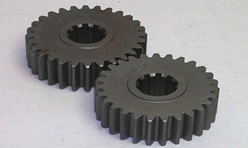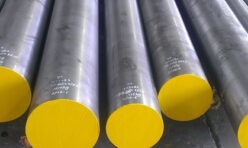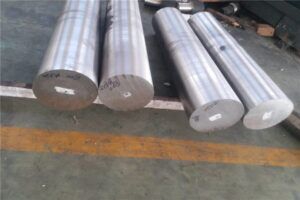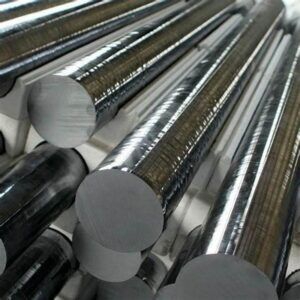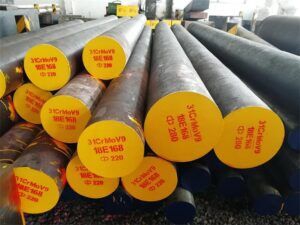20NiCrMo2-2 DIN 1.6523 SNCM220 8620 Gear Steel
8620 20NiCrMo2-2 DIN1.6523 SNCM220 Gear Steel
1. 8620 Characteristics
8620 gear steel is a low carbon nickel chromium molybdenum alloy steel. And it is a low cost steel with good carburized properties. The nickel content contributes to case toughness at high strength with above average core toughness. The chromium and molybdenum support the proper formation of carbides resulting in good surface hardness and wear. It is the most widely used carburizing alloy.
Back to Top
2. 8620 Applications:
When hardened and formed, 8620 gear steel may be used to produce hard wearing machine parts in a wide variety of industries. With its combination of elements along with the ease with which it may be processed, 8620 gear steel is a good choice for a variety of applications. Carburized 8620 gear steel is strong and durable and as a result is preferred in certain manufacturing applications. It is used to make a wide range of gears, crankshafts, gear rings, pinions, piston pins, cams, gauges, tie bars, collets, bushings and bolting as well as hand tools and a multitude of machinery parts and components. Structural parts such as gears, pinions, spline shafts, pins and a variety of other important applications requiring a hard wear surface and a ductile core.
Back to Top
3.Quality Standard:
ASTM A29 Standard Specification Steel Bars, Carbon and Alloy, Hot-Wrought, General Requirements
EN 10277 Bright steel products.
EN 10278 Dimensions and tolerances of bright steel products
Back to Top
4.All Grades Comparison:
Back to Top
5.Chemical Composition(%):
| Steel Grade | C | Mn | Si | P | S | Cr | Ni | Mo |
|---|---|---|---|---|---|---|---|---|
| 8620 | 0.18-0.23 | 0.70-0.90 | 0.15-0.35 | 0.030 max | 0.040 max | 0.40-0.60 | 0.40-0.70 | 0.15-0.25 |
| 20NiCrMo2-2 | 0.17-0.23 | 0.65-0.95 | 0.40 max | 0.030 max | 0.030 max | 0.35-0.70 | 0.40-0.70 | 0.15-0.25 |
| SNCM220 | 0.18-0.23 | 0.60-0.90 | 0.15-0.35 | 0.030 max | 0.040 max | 0.40-0.65 | 0.40-0.70 | 0.15-0.30 |
Back to Top
6.Mechanical Properties( T=20°C if not differently stated ):
| Dia(mm) | Tensile Strength Rm (Mpa) | Yield Strength R2 (Mpa) | Fracture elongation A5 (%) | Hardness (HB) |
|---|---|---|---|---|
| 18-40 | 925 min | 690 min | 17 min | 275 max |
| 40-80 | 740 min | 493 min | 20 min | 220 max |
Back to Top
7. 8620 Heat Treatment:
This 8620 gear steel may be hardened by heating to 1500F followed by a water quench. Carburize at 1650F to 1700F in an appropriate carburizing medium and oil quench to harden. Improved carburized case and core properties can be obtained by furnace cooling from carburizing at 1650F-1700F and then reheating to 1575F.
Annealing:
8620 gear steel may be given a full anneal at 1550F and slow cooling at not more than 50F per hour down to 850F. From there it may be air cooled.
Hardening:
Hardening is done by oil quench from 1675F. Carburizing is accomplished at the same 1650F-1700F range in a carburizing “pack” or environment, followed by oil quench for thin sections or a furnace cool for heavier (over 3/4″) sections. Following carburizing of heavy sections a reheat at 1575F will enhance both case and core properties of the alloy.
Tempering:
Tempering of carburized parts is done at 250F-300F and this will result in the alloy having a core strength of approximately 135 ksi minimum with Rockwell C case hardness of 90. Tempering of heat treated and water quenched parts (not carburized) is done at 400F-1300F with greater hardness the lower the tempering temperature.
Back to Top
8.Machinability:
Machining is done prior to carburizing to within as close a tolerance as possible. Finish machining, after heat treatment and/or carburizing, should be at a minimum so as not to impair the hardened case of the part. Machining may be done by conventional means prior to heat treatment – after carburizing machining is usually limited to grinding.
Back to Top
9.Forming:
Forming characteristics of 8620 gear steel are good in the annealed condition.
Back to Top
10.Welding:
The 8620 gear steel may be welded by conventional methods, usually gas or arc welding. Preheating at 400F is beneficial and subsequent heating after welding is recommended – consult the approved weld procedure for the method used.
Back to Top
11.Forging:
The alloy may be forged at 2200F down to 1800F prior to the hardening heat treatment or carburizing.
Back to Top
12.Hot Working:
Hot working may be accomplished prior to hardening or carburizing. Consult the alloy supplier for information as to temperatures.
Back to Top
13.Cold Working:
The alloy may be cold worked in the annealed condition by conventional methods. Cold working, as with machining, should be done to as close a tolerance as possible before heat treatment or carburizing.
Back to Top

